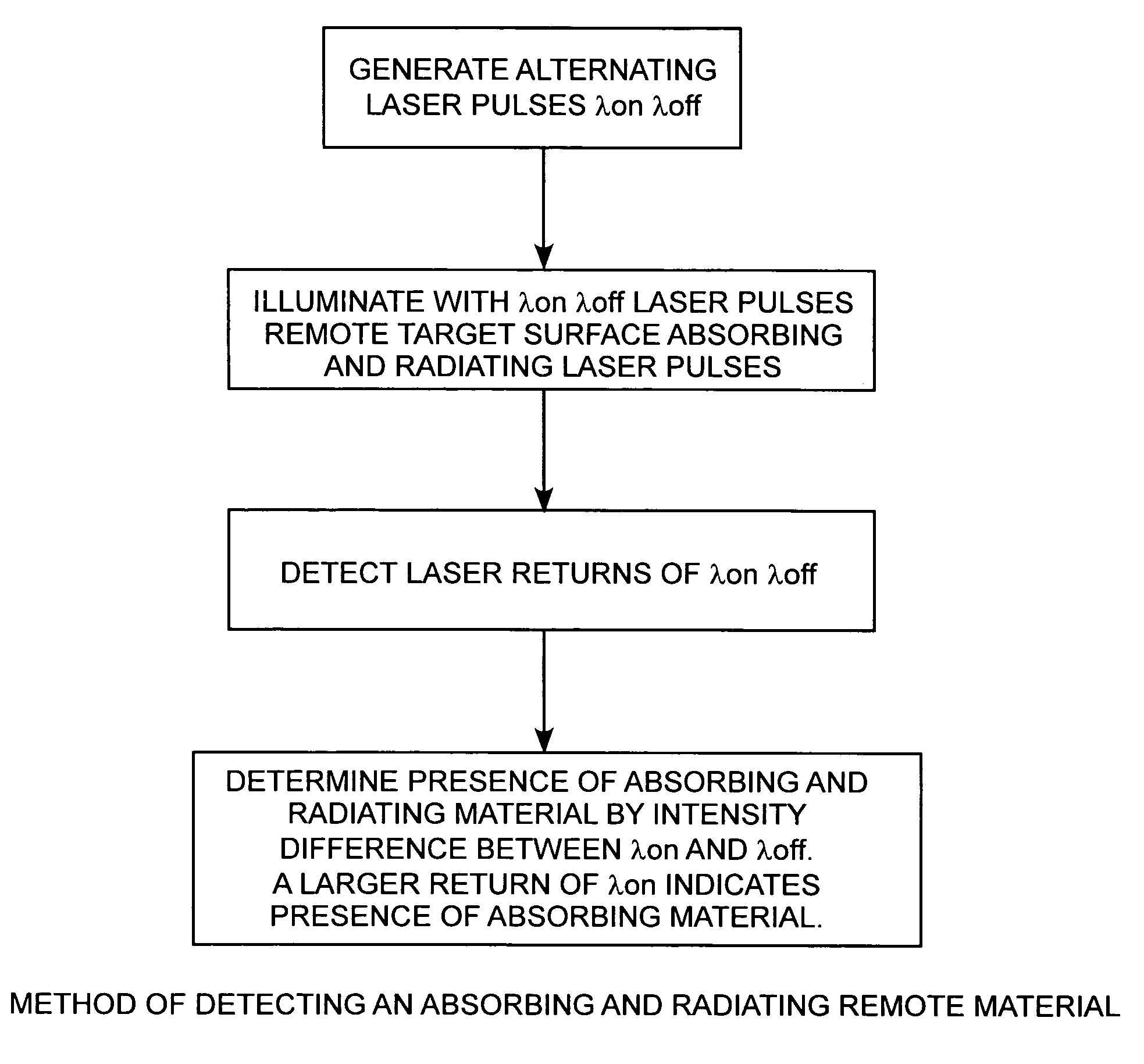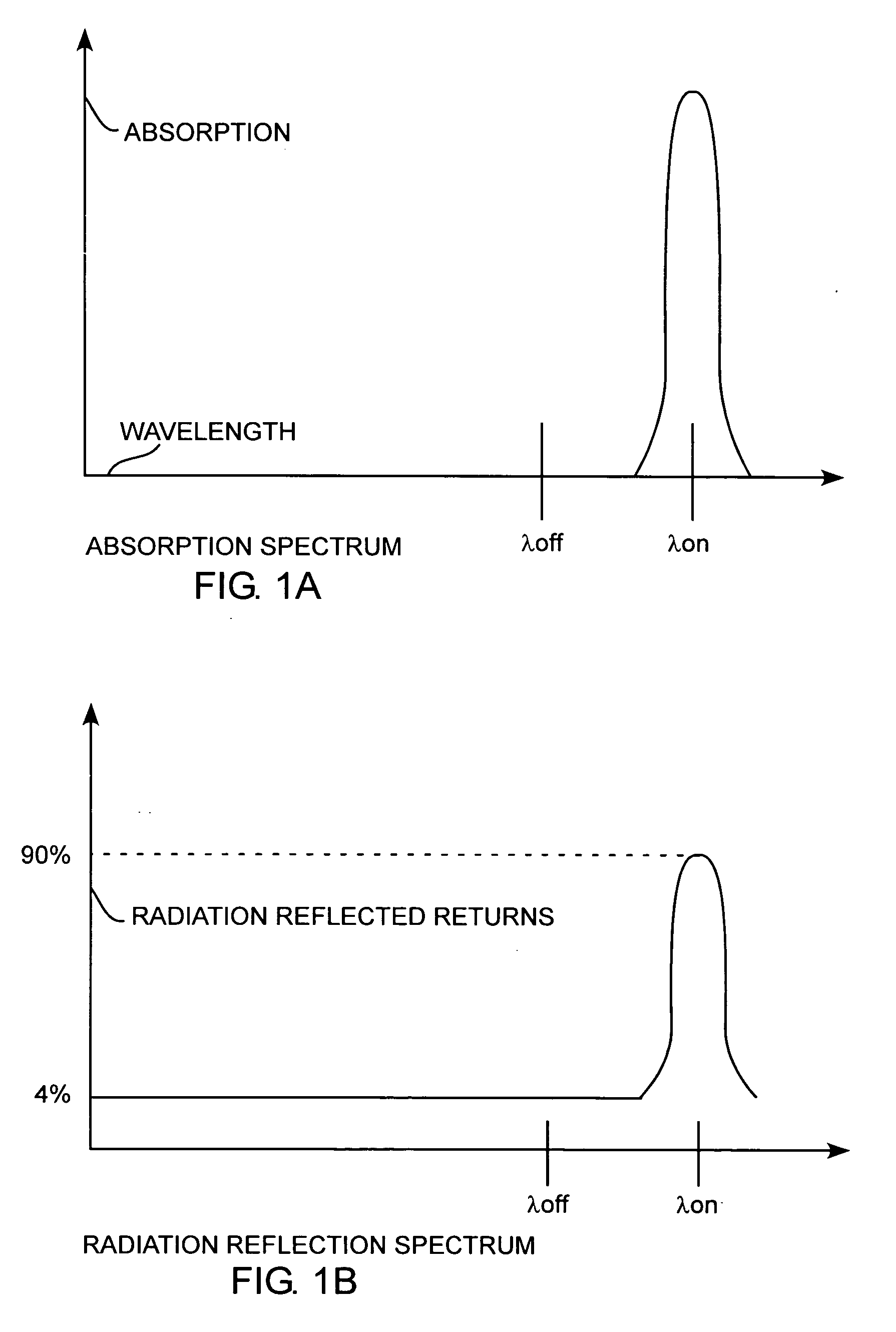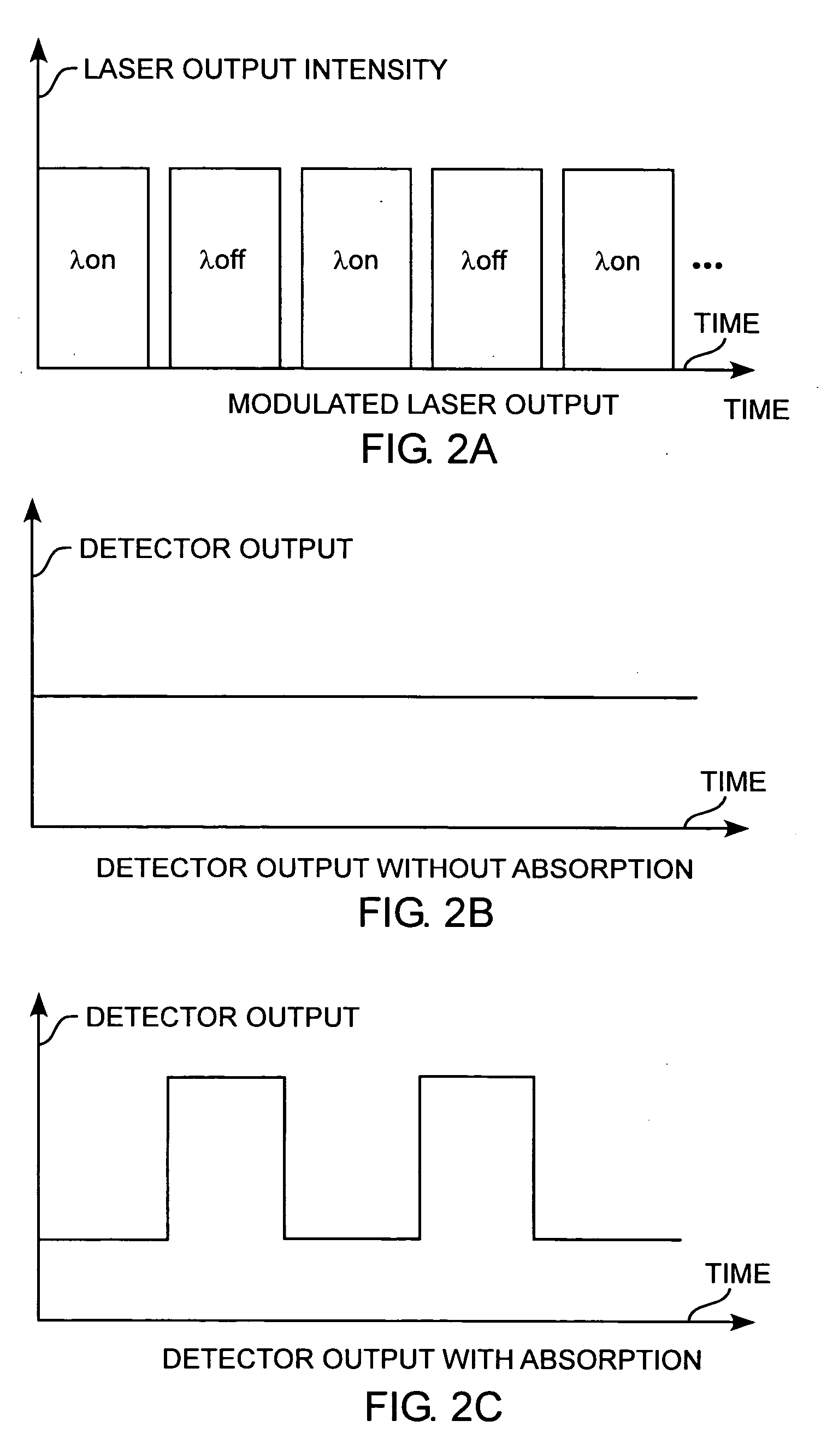Multispectral selective reflective lidar
a lidar and selective technology, applied in the field of surface chemical analysis, can solve the problem of insufficient thermal radiation for high-resolution spectral analysis at the surface temperature of the moon
- Summary
- Abstract
- Description
- Claims
- Application Information
AI Technical Summary
Problems solved by technology
Method used
Image
Examples
Embodiment Construction
[0015] An embodiment of the invention is described with reference to the figures using reference designations as shown in the figures. A remote sensing surface chemical analysis instrument includes a Lidar for generating laser pulses and a detector for detecting returns. Referring to FIGS. 1A and 1B, the Lidar generates at least one laser pulse at a first λon wavelength towards a surface material. When the first wavelength λon is not absorbed and hence not reradiated by the surface material, there are insignificant first wavelength λon ordinary reflected returns. The insignificant returns can be small Fresnel reflections. When the first wavelength λon is absorbed and reradiated as selective reflections, then there is a large return at the first wavelength λon. Referring to FIGS. 1A, 1B, 2A, 2B, and 2C, the preferred Lidar system generates alternating pulses at the first wavelength λon and a second wavelength λoff. When the first wavelength λon and the second wavelength λoff are not ...
PUM
| Property | Measurement | Unit |
|---|---|---|
| first wavelength | aaaaa | aaaaa |
| second wavelength | aaaaa | aaaaa |
| wavelength | aaaaa | aaaaa |
Abstract
Description
Claims
Application Information
 Login to View More
Login to View More - R&D
- Intellectual Property
- Life Sciences
- Materials
- Tech Scout
- Unparalleled Data Quality
- Higher Quality Content
- 60% Fewer Hallucinations
Browse by: Latest US Patents, China's latest patents, Technical Efficacy Thesaurus, Application Domain, Technology Topic, Popular Technical Reports.
© 2025 PatSnap. All rights reserved.Legal|Privacy policy|Modern Slavery Act Transparency Statement|Sitemap|About US| Contact US: help@patsnap.com



